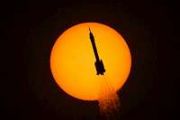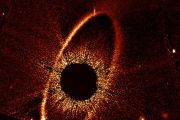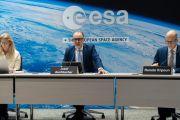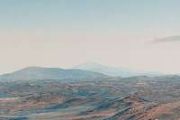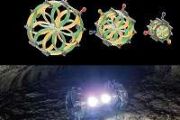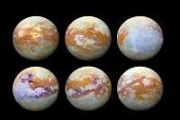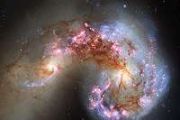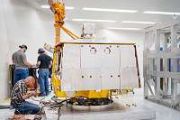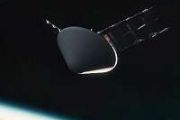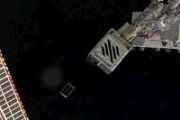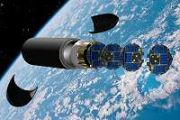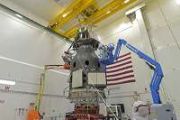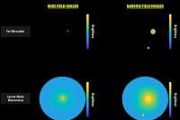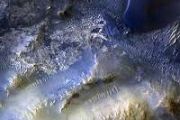
Copernical Team
Surprise finding suggests 'water worlds' are more common than we thought
 Water is the one thing all life on Earth needs, and the cycle of rain to river to ocean to rain is an essential part of what keeps our planet's climate stable and hospitable. When scientists talk about where to search for signs of life throughout the galaxy, planets with water are always at the top of the list.
A new study suggests that many more planets may have large amounts of water tha
Water is the one thing all life on Earth needs, and the cycle of rain to river to ocean to rain is an essential part of what keeps our planet's climate stable and hospitable. When scientists talk about where to search for signs of life throughout the galaxy, planets with water are always at the top of the list.
A new study suggests that many more planets may have large amounts of water tha JAXA startup Tenchijin releases free land evaluation app using EO data
 Tenchijin COMPASS enables people who have never used satellite data before to analyze, visualize data, and experience the power of satellite data.
The use of satellite data has been attracting attention, but it has tended to have an image of being expensive and difficult to handle. Therefore, Tenchijin, Inc., a Japan Aerospace Exploration Agency (JAXA) -recognized startup, has been support
Tenchijin COMPASS enables people who have never used satellite data before to analyze, visualize data, and experience the power of satellite data.
The use of satellite data has been attracting attention, but it has tended to have an image of being expensive and difficult to handle. Therefore, Tenchijin, Inc., a Japan Aerospace Exploration Agency (JAXA) -recognized startup, has been support Why do we always need to wait for launch windows to get a rocket to space
 Earlier this week, the Artemis I Moon mission was scrubbed again; now we have to wait for a new launch window.
Just 40 minutes before the Space Launch System rocket was set to take off from Kennedy Space Centre in Florida on September 3, a leaking fuel line caused engineers to scrub the launch.
So what is a launch window, and why can't a rocket go up at any time? And what does it mea
Earlier this week, the Artemis I Moon mission was scrubbed again; now we have to wait for a new launch window.
Just 40 minutes before the Space Launch System rocket was set to take off from Kennedy Space Centre in Florida on September 3, a leaking fuel line caused engineers to scrub the launch.
So what is a launch window, and why can't a rocket go up at any time? And what does it mea MTG-I1 weather satellite shows off
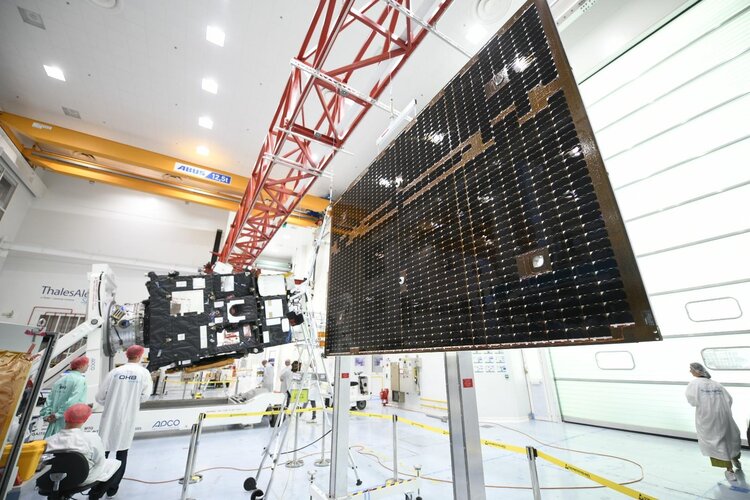
Before Europe’s first Meteosat Third Generation Imager leaves the south of France at the end of the month aboard a ship bound for French Guiana, this remarkable new weather satellite has been taking centre stage at Thales Alenia Space’s facilities in Cannes.
This is ESA: now interactive – in 23 languages!

This is ESA is an illustrated guide to what ESA is and what we do. It has been available in print since 2019. Now this brochure is also available as an interactive publication in all ESA Member State languages.
NASA eyes two more dates in September for possible Moon launch

NASA is looking at September 23 and September 27 as possible dates for its next attempt at launching its Artemis 1 mission to the Moon, senior official Jim Free told reporters Thursday.
Two previous attempts were scrapped after the giant Space Launch System rocket experienced technical glitches including a fuel leak.
"The 23rd is a 6:47am window open for 80 minutes, and the 27th is an 11:37am window with a 70-minute duration," said Free, associate administrator for the agency's exploration systems development directorate.
Register now: ESA Open Day at ESTEC

Registration is now open for the 11th annual ESA Open Day at ESTEC, open to all visitors. ESA’s ESTEC technical centre in Noordwijk, the Netherlands, will be open from 10:00 to 17:00 on Sunday 2 October, giving visitors a chance to meet astronauts, space scientists and engineers and learn all about the work carried out at Europe’s largest space establishment.
NASA may attempt Moon launch on September 23: official

NASA is looking at September 23 and September 27 as possible dates for its next attempt at launching its Artemis 1 mission to the Moon, senior official Jim Free told reporters Thursday.
Two previous attempts were scrapped after the giant Space Launch System rocket experienced technical glitches including a fuel leak.
"The 23rd is a 6:47am window open for 80 minutes, and the 27th is an 11:37am window with a 70-minute duration," said Free, associate administrator for the agency's exploration systems development directorate.
Forsway introduces latest satellite terminals, Forsway Odin F-60 and Odin F-60 Pro
 Forsway, a provider of innovative, cost-efficient solutions for enabling broadband connectivity in underserved regions, has announced its next generation of satellite terminals. Produced by strategic manufacturing partner, Zinwell, the new Forsway Odin F-60 and Odin F-60 Pro terminals will be available in Q1 2023 and will succeed the F-50 model. Previews of the new terminals will be available du
Forsway, a provider of innovative, cost-efficient solutions for enabling broadband connectivity in underserved regions, has announced its next generation of satellite terminals. Produced by strategic manufacturing partner, Zinwell, the new Forsway Odin F-60 and Odin F-60 Pro terminals will be available in Q1 2023 and will succeed the F-50 model. Previews of the new terminals will be available du Scientists reveal magnetic reconnection details triggering filament eruption
 Eruption of a solar filament produces a coronal mass ejection, which is a major driver of space weather. Understanding how filaments erupt is thus essential for space weather forecasting.
Both observations and simulations suggest that filament eruption is closely related to magnetic flux emergence. It is thought that eruption is triggered by magnetic reconnection between a filament and an
Eruption of a solar filament produces a coronal mass ejection, which is a major driver of space weather. Understanding how filaments erupt is thus essential for space weather forecasting.
Both observations and simulations suggest that filament eruption is closely related to magnetic flux emergence. It is thought that eruption is triggered by magnetic reconnection between a filament and an 
